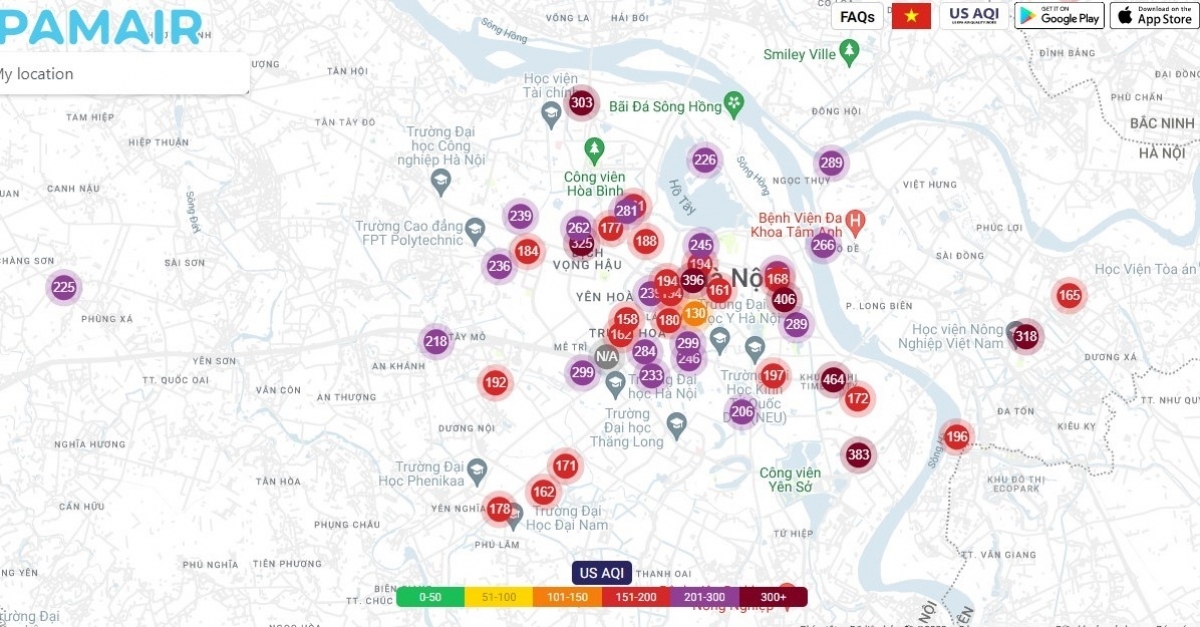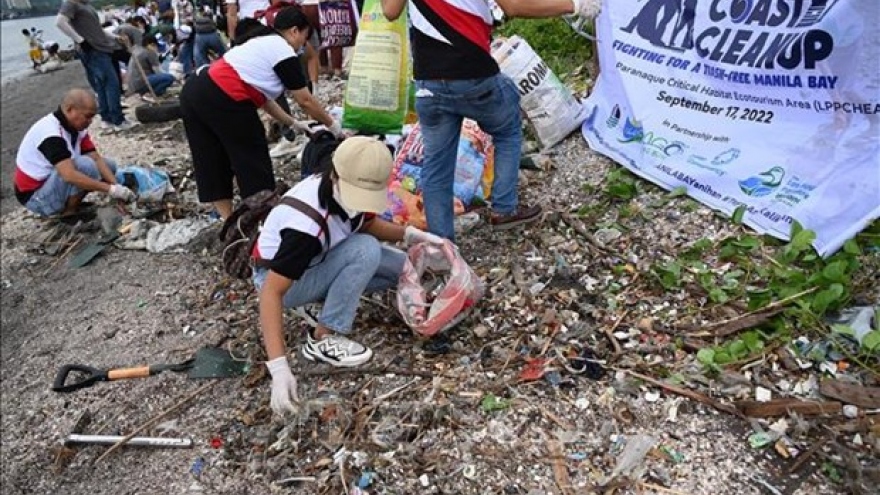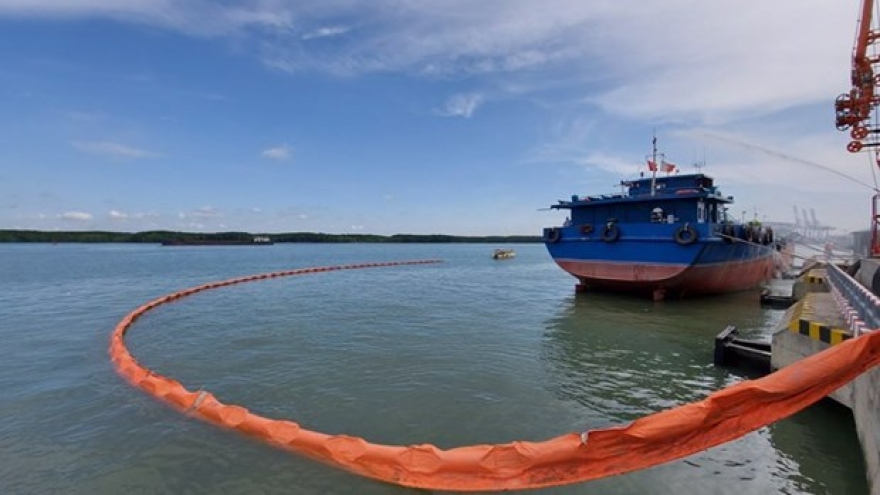Hanoi’s air pollution has negative impact on children’s health
VOV.VN - PAM Air monitoring stations in Hanoi reported that the Air Quality Index (AQI) in areas of the capital have reached hazardous levels, mostly in densely-populated areas near schools and kindergartens which have an adverse impact on the health of children and the elderly.
This comes after the AQI in Nguyen Che Nghia street and Time City urban area was recorded at between 406 and 464 at 8:15 a.m. on November 9, with PAM Air 2.5 dust reaching up to 320.9 and 435.3 microgram/m3, a level extremely dangerous for human health.
The majority of the capital remains in the red, purple, and brown levels, all of which are unhealthy for sensitive groups and people who suffer from respiratory diseases or underlying health issues.
Dr. Hoang Duong Tung, chairman of the Vietnam Clean Air Network, analysed that the recent spell of weather without rain and calm wind has prevented pollutants from being dispersed or washed away, with these being viewed as the main cause of Hanoi’s air pollution over recent days.
Air pollution often occurs at this time of year with the air indicators only being improved when there is rain and strong wind, Dr. Tung added.
Environmental experts have also attributed Hanoi’s “unhealthy” air pollution to temperature inversion, pollutants coming from traffic, construction, industrial production, and craft villages, as well as straw burning occurring in outlying districts.
Due to these challenges, environmental experts recommend that people avoid prolonged exercise outside, protect their health by wearing fine particulate matter (PM2.5) dust masks, as well as limiting outdoor activities.
Furthermore, people suffering from asthma may need to use their medication more often, while sensitive groups should avoid outdoor activities.



